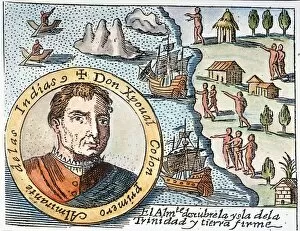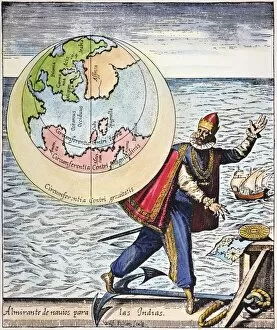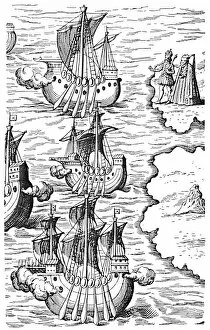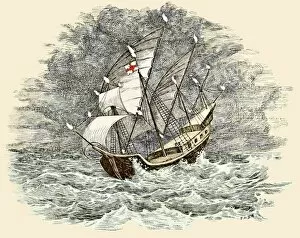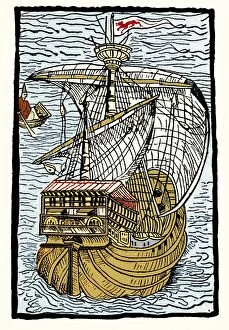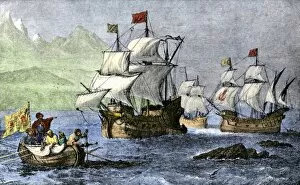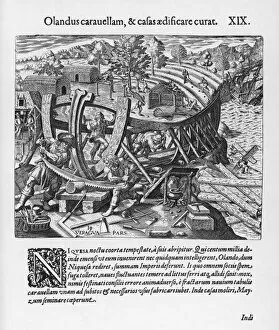Caravel Collection (#6)
The caravel, a remarkable vessel that played a significant role in maritime history, has left an indelible mark on the world
For sale as Licensed Images
Choose your image, Select your licence and Download the media
The caravel, a remarkable vessel that played a significant role in maritime history, has left an indelible mark on the world. From its involvement in the Battle of Lepanto (Lepanto) in 1571 to being depicted by Pere Mates (1500-1558), a renowned Renaissance Spanish painter, in his Altarpi artwork, this ship symbolizes exploration and adventure. Navigating by stars became possible with the caravel's introduction. Sailors relied on celestial bodies to guide them through treacherous waters at night, as shown in NAVIGATION BY STARS from 1575. It was this innovation that allowed The Pinta, the Nina, and the Santa Maria to sail towards the West Indies in 1492 during Christopher Columbus' voyage of discovery. Speaking of Columbus, he himself embarked on one such journey aboard a caravel. An engraving colored beautifully captures his spirit and determination as he set sail for new horizons. Catalan literature also recognized this vessel's significance during the 14th and 15th centuries when it featured prominently in books like Book of Con. Even outside Europe's shores, caravels made their presence felt. Magellan's expedition utilized these ships during their circumnavigation of the globe—an extraordinary feat that forever changed our understanding of Earth's geography. Back home again at Palos de la Frontera lies another pivotal moment: Embarkation of Christopher Columbus. This painting immortalizes Columbus boarding his trusty caravel before embarking on his groundbreaking voyage across uncharted seas. Not limited to Spain alone, Portuguese explorer Vasco da Gama also relied heavily on these versatile vessels during his expeditions between 1460-1524. Their reliability and maneuverability were unmatched at sea. As time went on, other magnificent ships emerged—such as HMS Sovereign of the Seas—a testament to how influential early designs like those seen with caravels were.



